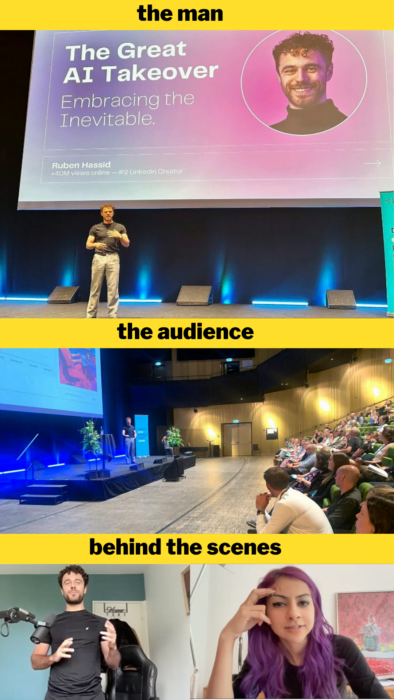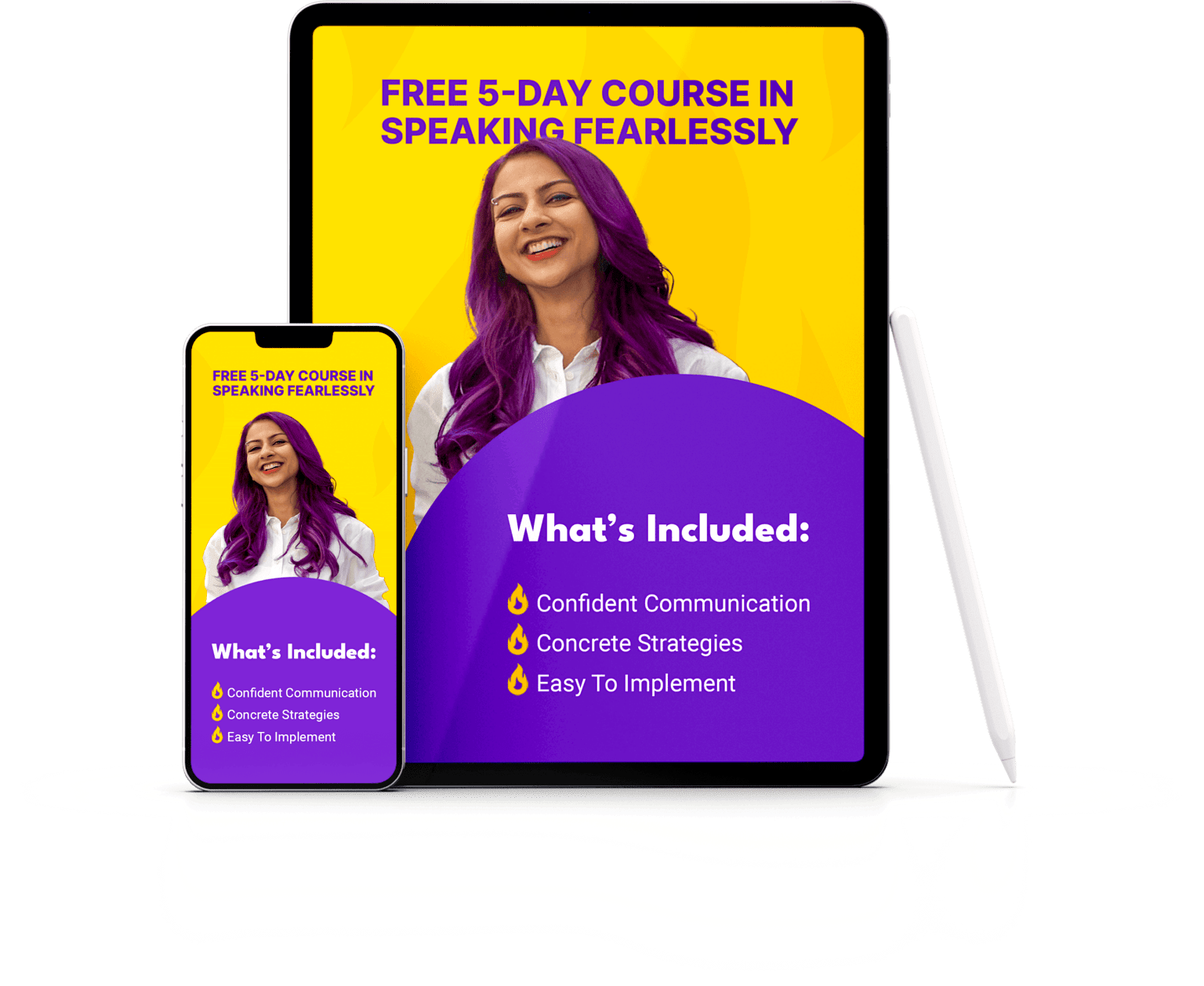You can’t escape online virtual presentations. In fact – for most of us, a large majority of the presentations that we do might be online.
This presents a unique set of challenges for anyone who is more comfortable doing presentations in person. I constantly get clients telling me: “I know how to engage my audience when I can look them in the face and feel the vibe in the room. But when it’s just me talking to a camera and I can’t even see the faces of the audience – I have no idea what to do.”
People genuinely feel lost when they need to present online “into the void”. However,
Whether you’re leading a remote meeting, giving a webinar, or delivering an online presentation, the ability to engage and connect with remote audiences is a valuable skill.
Remote presentations require a unique set of strategies and considerations to ensure that your audience remains captivated and involved. In this comprehensive guide, we will explore the psychology behind remote audience engagement and provide actionable tips to help you excel in any online presentation, talk or meeting.
Table of Contents
The Psychological Landscape of Virtual Presentations
Understanding the psychology of remote audiences is crucial. Unlike in-person presentations, virtual settings pose distinct challenges to engaging your audience effectively. Let’s delve into the psychological factors at play:
1. Attention Spans in 2023:
In an era of constant digital distractions, attention spans are at a premium. Remote audiences are more prone to multitasking or disengaging if your presentation fails to capture their interest.
Everyone has an email to check. You need to be more interesting, urgent and engaging than their notifications.

2. The Absence of Nonverbal Cues:
In online presentations, nonverbal cues like body language and facial expressions are limited. This can make it challenging to gauge audience reactions and adapt your presentation accordingly.
The key is to either encourage people to turn their cameras on (to give you the extra visual and body language cues) or to engage with the audience in the chat as much as possible.
3. Technological Hurdles:
Technical issues, such as poor audio or video quality, can lead to audience frustration and disengagement.
A lot of speakers also get thrown off if the tech doesn’t work well – this can impact the flow of the presentation. Check out this post to see how you can start your first presentation as soon as tomorrow.
4. The (Unfortunate) Comfort of Anonymity:
Remote audiences often feel a sense of anonymity, which can make them more likely to disengage or express negative feedback.
Keeping this in mind will help you create engagement strategies that work for online audiences – e.g. instead of relying on your own “reading” of the room in an in-person presentation, give yourself extra data to understand how they’re doing as you present.

5. Environmental Distractions:
Your audience’s physical environment can introduce additional distractions, from noisy neighbors to competing work tasks. Keeping this in mind, making allowances for it and also enabling the audience to go off camera if needed creates an accepting and understanding environment.
Tips for Engaging Remote Audiences
Navigating the psychological intricacies of remote presentations is a multifaceted process. To captivate your audience each time you speak online, here are these actionable strategies:

1. Build in intentional engagement:
In an online setting, an engaged audience is worth its weight in gold. Encourage active participation. Don’t just resort to “Do you have any questions?” Many people don’t know what to ask – or they may not feel comfortable asking. Instead, build in engagement intentionally throughout your presentation.
Try these:
- Use features like polls, chat, and Q&A to involve your audience.
- Ask open-ended questions and invite feedback to create a sense of collaboration.
- Use different types of engagement – ask the audience to raise their hands, come on camera or respond to question prompts in chat.
Expert Insight: Social presence theory, as studied by Joseph Walther, shows the importance of creating a sense of human connection in computer-mediated communication. Even though online presentations aren’t the same as in-person interactions, there are many ways that people can create personal experiences and mimic the same type of communication.
2. Structure Your Presentation or Talk Interactively:
Treat every presentation and talk as a two-way conversation instead of a one-way lecture.
Signpost key points in your presentation and use transitions to keep your audience oriented.
Include an engagement exercise every 5-7 slides or every 5-7 minutes. This helps your audience stay involved, have fun and potentially implement the knowledge they’ve just gained.
Too many speakers go wrong here: they have tens of slides without checking in with the audience to see if they’re still with them. This does not facilitate interaction.

Photo by Andrea Piacquadio
3. Leverage Slides Effectively:
Presenters often get slides wrong.
Some use too many stock images that make very little impact and look impersonal.
Some clutter their slides with too much text and fully written out sentences.
Some talk for more than 3 minutes on a single slide.
All these poor practices affect how well the material is understood and how much the audience remembers after the presentation is over.
Use these tactics to create more impactful slides:
- Visuals can enhance comprehension and engagement. However, use them judiciously and aim to use original visuals or disruptive visuals as much as possible.
- Keep slides uncluttered, use visuals to illustrate key points, and avoid text-heavy slides.
- Avoid fully formed sentences and just use phrases and keywords.
- Vary slide formats – break up heavy slides into smaller ones, and consider adding in extra slides that provide breathing room.
- Ensure that you’re spending no more than 3 minutes per slide. The audience wants to see visual movement to stay engaged and staying on the same slide for too long discourages engagement.

Photo by Ono Kosuki
4. Don’t read from the slides:
When you read from the slides, the audience immediately gets bored and disengaged.
The presentation is not there for you to read from as a document. If that was the case, the presentation could have been an email.
Instead, use the slides as a roadmap to guide your talk and construct sentences based on the keywords that you see in your slides.
5. Use Your Voice Mindfully:
Your voice is a powerful tool in virtual presentations – and yet many speakers don’t use it well.
You may be much more monotonous than you think. Vary your tone, pace, and volume to keep your audience engaged. Pause for emphasis, and enunciate clearly. These tips sound simple but will be a bit complex to implement. However, with strategic practice over time, you can change the way your voice works while presenting and show up with more impact.
Expert Insight: The psychology of voice in communication is explored by researchers like Albert Mehrabian, who established that nonverbal cues, including voice tone, can significantly impact the message’s interpretation.

6. Tell Compelling Stories:
Stories are a powerful tool for engagement. Use anecdotes, case studies, or personal narratives to illustrate your points and create an emotional connection with your audience.
Expert Insight: Narrative psychology, championed by psychologists like Jerome Bruner, underscores the role of storytelling in making sense of our experiences.

Photo by Karolina Grabowska
7. Set clear audience expectations:
Very few speakers set audience expectations right.
At the outset, try these strategies to get maximum impact from your presentation:
- Encourage your audience to reduce on-screen distractions by closing unnecessary tabs or applications.
- Stress the importance of dedicated attention during your presentation.
- Let the audience know you will be interacting with them and you’d like them to respond to your questions throughout the presentation. This gets a buy-in from them and ensures you have an engaging session instead of a one-way lecture.
Expert Insight: Attentional control theory, as explored by Michael I. Posner, emphasizes the role of attention in cognitive processes and the need to manage distractions for effective focus.
8. Embrace the Power of Empathy:
Show empathy and understanding toward your audience’s remote work environment. Acknowledge their challenges and express your support and appreciation for their time and attention.
Expert Insight: Empathy, as discussed by psychologist Daniel Goleman, is a fundamental element of emotional intelligence and interpersonal connection.

Photo by Ketut Subiyanto
9. Practice and Rehearse:
Practice is key to confidence and competence in virtual presentations.
However, a lot of presenters resist practicing or practice their presentations ineffectively.
Dedicate time to practice and rehearse your presentation thoroughly. Familiarity with your material boosts your confidence and delivery.
Try these strategies:
- Rehearse your presentation multiple times to ensure smooth delivery and troubleshoot potential issues. Simulate the presentation environment as much as possible during these rehearsals.
- Record yourself and watch yourself back to note your key strengths and opportunity areas.
- Each practice should have a clear goal that you should evaluate yourself on after the practice to track your progress.
Expert Insight: The psychology of skill acquisition, as studied by psychologists like Anders Ericsson, highlights the importance of deliberate practice in skill development.

10. Seek Feedback and Adapt:
After your presentation, gather feedback from your audience and peers. Use this feedback to adapt and improve your future virtual presentations.
Expert Insight: The feedback and adaptation cycle is a fundamental principle of learning and skill refinement, supported by psychologists like Lev Vygotsky.
11. Know Your Audience:
Understanding your audience can greatly enhance your confidence. Tailor your talk to their interests, needs, and expectations. Knowing that your message is relevant to your listeners can boost your self-assurance.
If you’re going into an audience of unfamiliar people, take some time in the beginning to ask them questions – this will help break the ice as well as give you data to work with in the session and adapt on the fly.
Expert Tip: Psychologists like Abraham Maslow’s hierarchy of needs theory can help you appreciate the importance of addressing your audience’s specific needs.
The Psychology of Audience Engagement in Virtual Presentations
Understanding the psychology of remote audience engagement is pivotal in the digital age. By recognizing the challenges and employing these actionable strategies, you can elevate your virtual presentations from mere information sharing to meaningful, interactive experiences. Nailing virtual presentations is not just about technology; it’s about connecting with your audience on a psychological level, regardless of the physical distance that separates you.
A Final Word
The art of nailing virtual presentations is a continuous journey of learning and adaptation. As the digital landscape evolves, so do the strategies for remote audience engagement. By combining technical proficiency with psychological insights, you can master the virtual realm and leave a lasting impact on your remote audiences. The power to engage, inspire, and educate is within your grasp. Embrace it, and let your virtual presentations shine.
Conclusion
The ability to engage and connect with remote audiences through virtual presentations is a critical skill.
To succeed in this medium, understanding the psychology of remote audience engagement is essential. By acknowledging the unique challenges of virtual presentations and implementing actionable strategies, you can captivate your audience and create meaningful connections, regardless of physical distance.
Making sure virtual presentations run smoothly is a continuous journey of learning and adaptation, and as the digital landscape evolves, so do the strategies for remote audience engagement. By combining technical proficiency with psychological insights, you can excel in the virtual realm, leaving a lasting impact on your remote audiences.
Enjoying this content but want to improve your public speaking FASTER?
Let’s talk.



